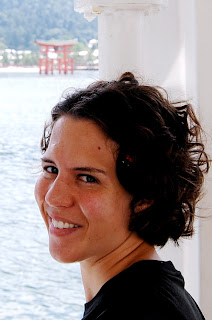
In early March Joe and I went to Yokohama, a suburb of Tokyo, to attend a conference for JETs who will be leaving the program and returning to their home countries this summer. While we were there we paid a visit to Chinatown.


Although Yokohama's Chinatown is one of the largest Chinatowns in the world, it was much different from the ones I've seen in San Francisco and Bangkok in that it was so much more sedate. The other Chinatowns I've visited have had a crowded, frenetic atmosphere, but this one was clean and peaceful, without too many people milling around. Though, I suppose that could have been because we visited during business hours on a Wednesday afternoon.
It seems that the dish of choice in this Chinatown is shark fin soup. A number of restaurants we passed were serving it, though we didn't realize this until after we'd already eaten lunch and really started walking around. I don't think I would have tried it anyway though. It's a delicacy, so it's expensive, and plus I think I have a problem with the idea of sharks being killed just so we can eat their fins.
My Japanese teacher tells me that the fins don't have much of a taste at all. They just soak up the flavor of the broth.
Another interesting dish we passed on the street: pigs feet. I'd just eaten so I didn't try this... but it doesn't seem very appetizing anyway.
Plenty of places also were selling nikuman, steamed buns with some meat inside. Joe and I absolutely love these things. You can buy them in any Japanese convenience store, and we're definitely going to miss them when we leave Japan.
All previews of things to come, since Joe and I will be taking a trip to China later this spring.





















